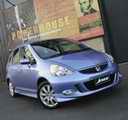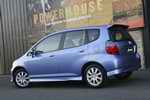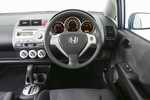By Donn Anderson – Reproduced with permission of ACP Media and Auto Trader
 Rocketing fuel prices have, unsurprisingly, put new emphasis on alternative fuels and improved economy. There’s talk of mass production plug-ins that aren’t to be confused with existing hybrid vehicles which combine petrol and electric motors. Many car makers are now running luke-warm on the fuel cell, a way of reacting hydrogen and oxygen together in a controlled manner to produce electricity.
Rocketing fuel prices have, unsurprisingly, put new emphasis on alternative fuels and improved economy. There’s talk of mass production plug-ins that aren’t to be confused with existing hybrid vehicles which combine petrol and electric motors. Many car makers are now running luke-warm on the fuel cell, a way of reacting hydrogen and oxygen together in a controlled manner to produce electricity.
Honda and Mercedes-Benz remain faithful to the fuel cell, but the industry is really seeking a breakthrough in battery technology. More immediately, Honda is developing new generation diesels, and the same brand plans to sell around 300,000 hybrids a year by 2011.
Meanwhile, getting bigger and better all the time has long been the philosophy of most motor manufacturers when it comes to replacing models. There isn’t much doubt cars continue to improve, but the idea of designing larger vehicles to replace their predecessors is no longer appropriate.
Honda’s enviable motorcycle history began in the sixties, but it was 1972 before the make’s four-wheel expertise came to the fore. This was in the shape of the original Civic, an ingenious small three-door hatchback that wooed international markets with its originality.
It was especially popular in New Zealand, enticing buyers who, until then, had been sold on a diet of mainly British cars. Honda could not assemble enough of these front wheel drive babies to satisfy local dealers and they had strong resale values.
In many ways the first generation Civic was the new Mini for the seventies. Yet subsequent Civics grew larger and larger, until the car outgrew the company’s lower medium size Accord. A small car the Civic was no longer. Of course increasing the size of a vehicle inevitably means bringing in another model beneath it to fill the gap. And the supermini class has become increasingly important, with twice the number of contenders than 10 years ago.
 Hence the local arrival eight years ago of the Jazz, or Fit as it is known in Japan and China. That the spacious, if slightly awkward looking, Jazz has been a success is in no doubt.
Hence the local arrival eight years ago of the Jazz, or Fit as it is known in Japan and China. That the spacious, if slightly awkward looking, Jazz has been a success is in no doubt.
Two million of them have been sold in 115 countries, and the on-going sales success is reflected in New Zealand, where the Honda was long the top-selling small car before being overwhelmed by the Suzuki Swift.
Gauging best sellers in a new car industry as small as ours can be misleading because factors like the rental car market can diffuse the real pattern or trends.
In June, for example, Toyota sold a large number of RAV4s to rental companies, elevating the model to near the top of the model list, unfamiliar territory for the compact SUV.
There have, however, been no such variances in demand for Honda’s smallest car.
The local distributor believes Jazz immediately changed the small car market, and there is no doubt the car has been a consistently strong seller virtually from launch.
This year, the enduring Jazz is running ninth best selling new car and second most popular small car with volumes outstripping Honda’s Civic and Accord.
The formula was deemed so right that when the new version arrived in Japan last year, both styling and dimensions were strikingly similar to the original.
New Zealand stays with the international version, while Jazz in its home market second time around has a 50mm longer wheelbase and a repositioned fuel tank that increases rear headroom by 10mm while retaining the same overall body height.
The tall body concept was always likely to comprise harmonious styling while preserving the remarkable interior space and flexibility that have made the car so popular.
At 3830mm, overall length still qualifies Jazz as a small car, even if the 1525mm height is anything but miniscule.
There’s a choice of 1.3-litre and 1.5-litre VTEC, with prices spanning $5000 from the entry-level manual that has a retail cost of $20,500.
Significantly, half the Jazz sales in our country are $24,600 Sport versions, with the larger motor boasting a seven-speed CVT automatic transmission as standard.
 For an extra $900 you can specify the same model with the swivel seat, a manually operated arrangement to ease entry and exit for front seat passengers.
For an extra $900 you can specify the same model with the swivel seat, a manually operated arrangement to ease entry and exit for front seat passengers.
Integrated body skirts, mesh grille and decals provide the Sport with a slightly more ostentatious look than the less powerful Jazz.
Even so, all the latest versions boast front fog lamps, rear spoiler and 185/55 Bridgestone tyres running on 15-inch spoked alloys.
Also standard is a height adjustable driver’s seat, manual air conditioning, rear load tonneau cover, leather steering wheel, engine immobiliser and power retractable wing mirrors.
Formula 1-style steering wheel paddles activate the CVT automatic, with the left-hand paddle to shift down and the right paddle for up shifting.
A steering wheel button switches between sequential and auto modes, and the transmission is smooth and quick acting. On a light throttle at slow urban speeds, however, there is some hesitancy.
With 81kW of power and 143Nm of torque, the Sport is a brisk performer, producing low emissions and frugal 6.1 litres/100km overall economy. The motor is happy to run on E10 ethanol blend petrol.
Electric speed sensitive steering is a little light and lacking in feel, and the car’s suspension is all conventional, with MacPherson struts up front and a rear trailing arm and torsion beam set-up at the rear.
Anti-roll bars are fitted front and rear and the ride is firm and somewhat unforgiving, while road noise tends to be high at open road speeds.
Rear brakes are drum, and the four-sensor, three-channel ABS braking is combined with electronic brake distribution.
All Jazz models also have emergency brake assist, while the Honda G-Force function is claimed to moderate the force of any impact and help maintain a safety zone around the car’s occupants.
What really sells this car, however, is the cab-forward design, compact engine, high body and flat floor, all of which embodies the Jazz with remarkable interior space.
Door panels and handles are scalloped and recessed where possible, and the versatile seating arrangement allows the carrying of tall, awkward loads.
There are no qualms, either, about the excellent leg and head room front and rear and the amount of storage space.
The bold instrument panel, with three main instrument dials reflecting a motorcycle heritage, and bright layout of controls also win favour.
Fine-tuned in Germany by a European design team, the enduring success of this little Honda is best expressed by the car’s long-time sales appeal.
The customer, as always, votes with the chequebook.









- 10 years ago